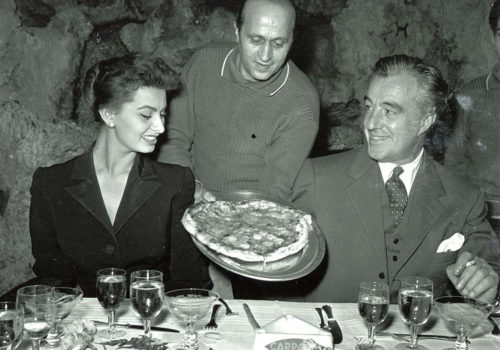Italians at the table 1860-1960. A photographic history of how people eat, of what they eat and of where they eat it in Italy
Think of a fantastic scenario in Stra, of an impressive patrician villa, which belonged to the prominent Pisani family, in the Most Serene Republic of Venice. Then think of a photographic history of how, what and where people used to eat in Italy during a whole century (1860 -1960): traditions and habits, both public and private, places and occasions when Italians took place at the table. The National Museum of Villa Pisani presented last month this exhibit in the year of the 2015 Milan Expo “Feeding the Planet: Energy for Life”.
The photographs, from the Manodori Sagredo archives and from the Fondo Vallicelliano, testify to Italy’s culinary and cultural identity. Indeed, Italy’s cuisine and its tables are an integral part of its history, as Pellegrino Artusi illustrated in La scienza in cucina e l’arte di mangiar bene (The Science of Cooking and the Art of Fine Dining) collecting the various regional traditions and creating a unique but multifaceted tradition for the post-unitarian Italy.
On stage, there are scenes in nineteenth-century hostelries and banquets in the restaurants of newly-united Italy’s great hotels as well as picnics, the scarcity of food in Italian cities ravaged by the wars and the refectories in military barracks. More than one hundred photographs tell of a journey throughout the peninsula, from the dawn of photography in the second half of the Nineteenth century up to the days of the “DolceVita” in the 1960s.
Next to the images, a range of original cameras and equipment let visitors find out more about how photographers created this interesting body of photographs
“The exhibit shows the cycle of food, from markets to the table: photos formalize family histories, from baptism to engagement and marriage as well as difficult periods as wars. Somehow a collective memory book”, Antonella Ranaldi, Soprintendente per i beni architettonici e paesaggistici (Venezia, Belluno, Padova, Treviso provinces), says.
Except for some images by well known authors (i.e. Carlo Ponti, Giorgio Sommer or the Fratelli Alinari), most of the photos were shot by amateur photographers or unknown authors, even so supporting the social and cultural sense of the table. You can find images of the “coffee ritual” (at home or at the café) or of the “black market” period, as well as those – most ancient ones – of peddlers and “bigolanti” (i.e. women who were selling water in Venice), as Alberto Manodori Sagredo recalls.
“The exhibit also underlines topics linked to various modes of production, which managed to change places and landscapes, as citrus plantation. An example is the Villa Pisani Orangerie, where lemons, oranges and bergamots were cultivated for the Villa’s owners and guests, but also to be sold”, Giuseppe Rallo, director of the National Museum of Villa Pisani adds.
EXHIBITION
Italians at the table 1860-1960. A photographic history of how people eat, of what they eat and of where they eat it in Italy
Closed
National Museum of Villa Pisani
Via Doge Pisani 7
30039 Stra (Venice)
Italy
www.villapisani.beniculturali.it
















